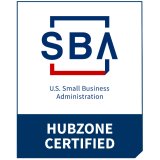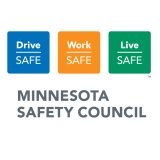Long-Term Health Effects – 20 years since 9.11 attacks
 The World Trade Center Health Program (WTCHP) was established in 2010 as a federal program to provide medical monitoring and no-cost treatment to eligible 9/11 responders and survivors. To date, over 110,000 individuals have enrolled in the program including 80,000 first responders and 30,000 survivors of the attacks. The WTCHP reports that 58% of individuals monitored have at least one certified WTC-related health condition. Top reported issues include: chronic rhinosinusitis, gastroesophageal reflux disease (GERD), cancers, asthma, sleep apnea, and post-traumatic stress disorder (PTSD).
The World Trade Center Health Program (WTCHP) was established in 2010 as a federal program to provide medical monitoring and no-cost treatment to eligible 9/11 responders and survivors. To date, over 110,000 individuals have enrolled in the program including 80,000 first responders and 30,000 survivors of the attacks. The WTCHP reports that 58% of individuals monitored have at least one certified WTC-related health condition. Top reported issues include: chronic rhinosinusitis, gastroesophageal reflux disease (GERD), cancers, asthma, sleep apnea, and post-traumatic stress disorder (PTSD).
Researchers have also tracked hearing loss and ear-related conditions among those exposed to WTC health hazards as part of rescue and recovery efforts. Among WTC-exposed firefighters and emergency medical service workers, the risk of hearing loss is higher than in the general public. Those first responders who spent more than 6 months at the WTC site have the highest risk of hearing loss among those studied. Similar comparisons of WTC registry residents and passersby show increased risk of hearing loss, particularly for those with persistent sinus problems, headaches, PTSD, and other chronic disease histories.
For more information:- 9.11 World Trade Center Health Program website
- Azofeifa A, Martin GR, Santiago-Colón A, et al. (2021). World Trade Center Health Program — United States, 2012−2020. MMWR Surveill Summ 70 (No. SS-4):1–21. DOI: http://dx.doi.org/10.15585/mmwr.ss7004a1.
- Cone J, Stein C, Lee D, Flamme G and Brite J (2019). Persistent Hearing Loss Among World Trade Center Health Registry Residents, Passersby and Area Workers, 2006-2007. Intl J Environ Res Public Health 16, 3864. DOI: 10.3390/ijerph16203864.
- Flamme G, Goldfarb D, Zeig-Owens R, et al. (2019). Hearing Loss Among World Trade Center Firefighters and Emergency Medical Service Workers. J Occup Environ Med 61(12)996-1003. DOI: 10.1097/JOM.0000000000001717
| Categories: | Hearing & Hearing Loss, Industry News |





